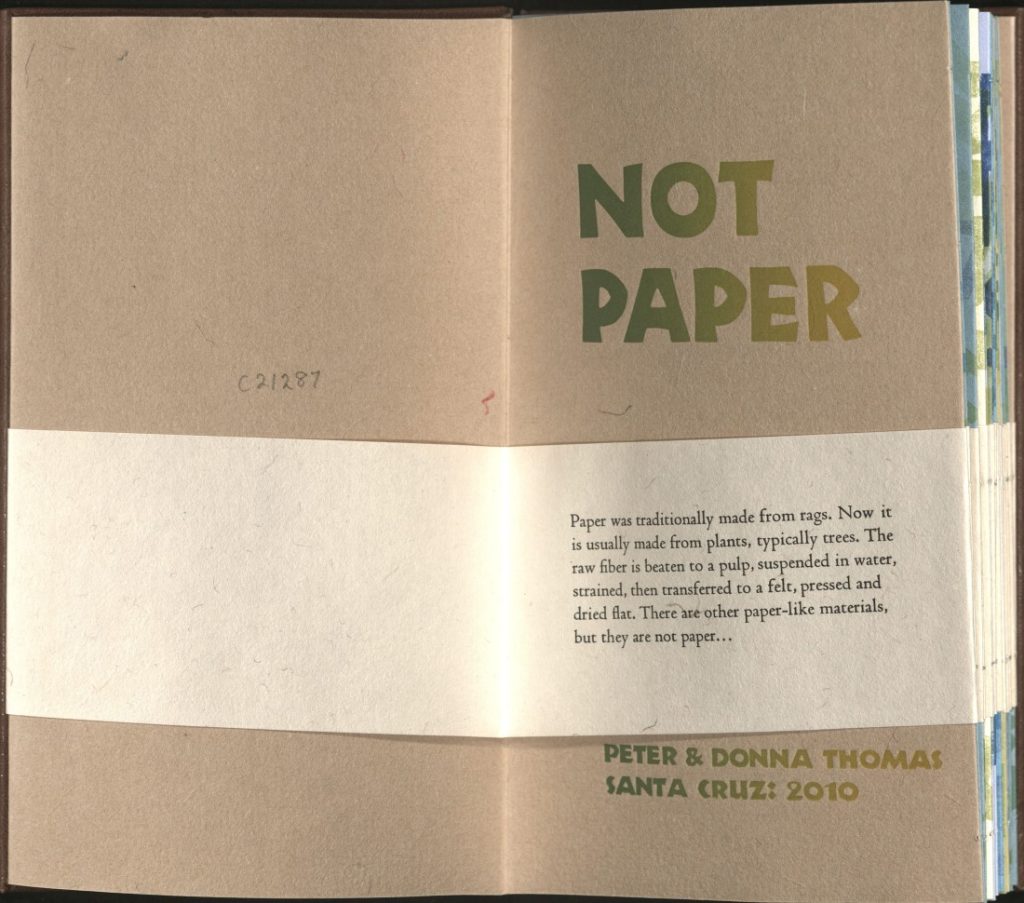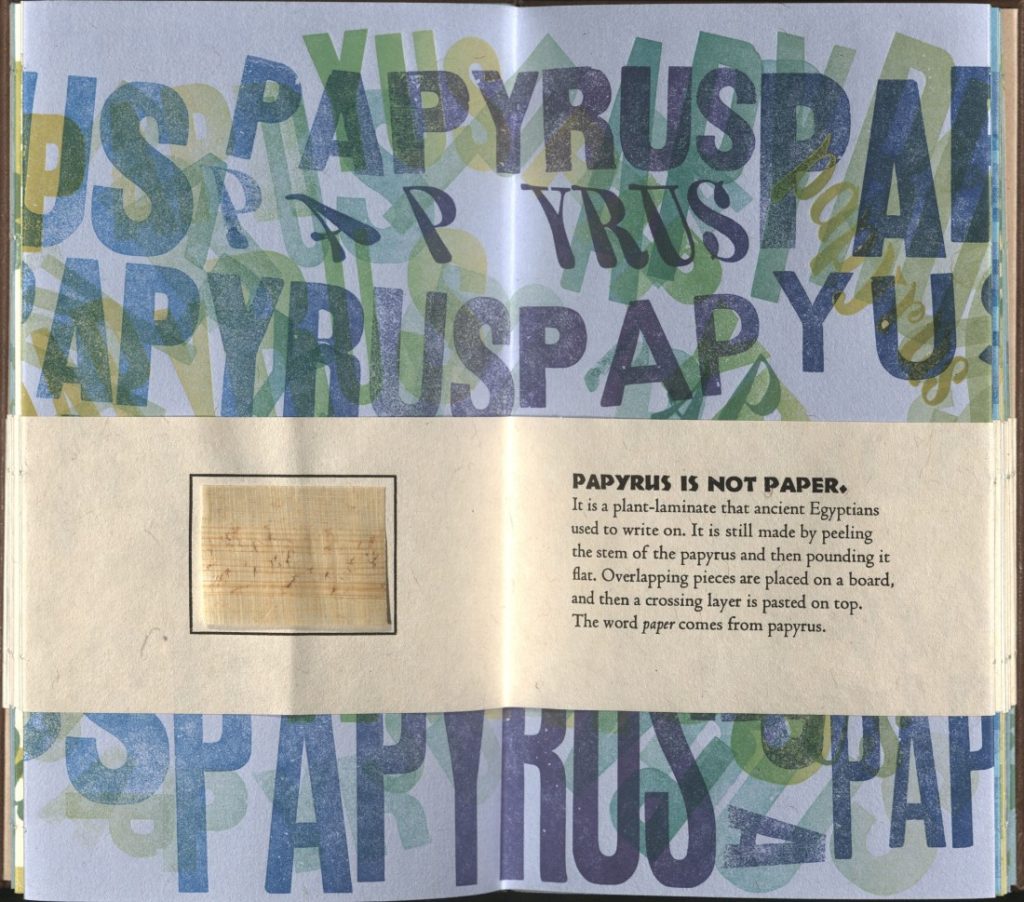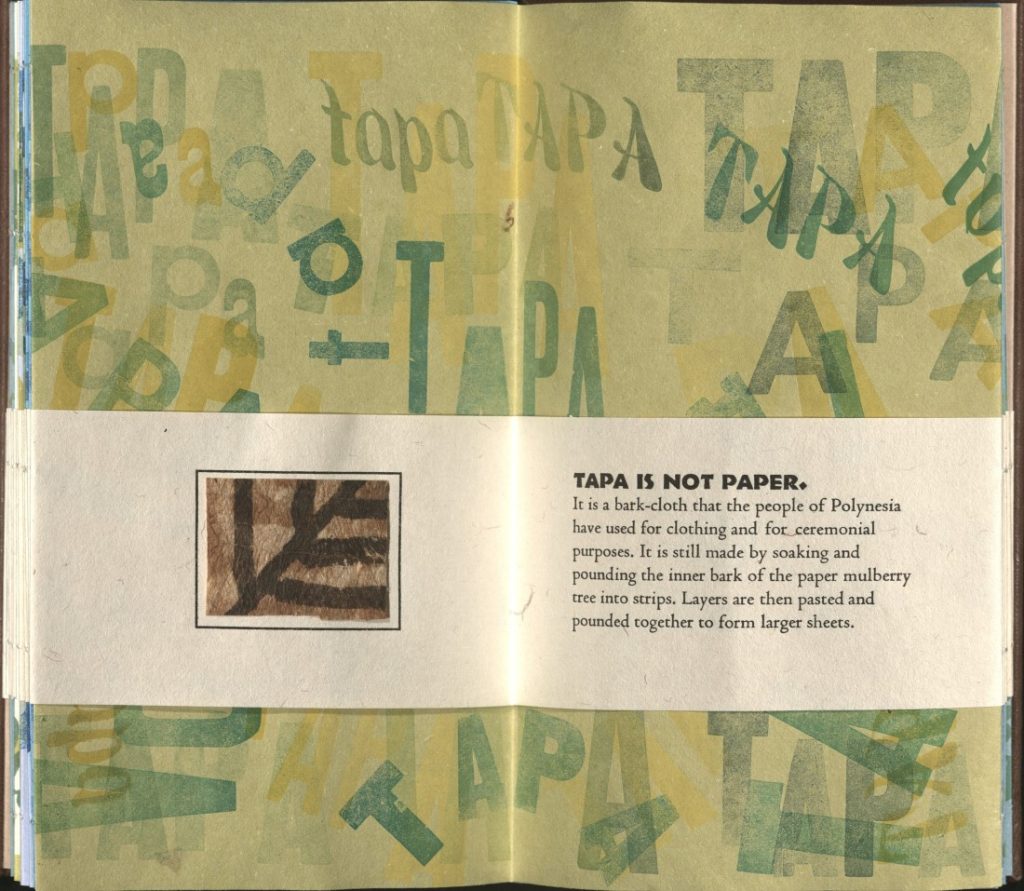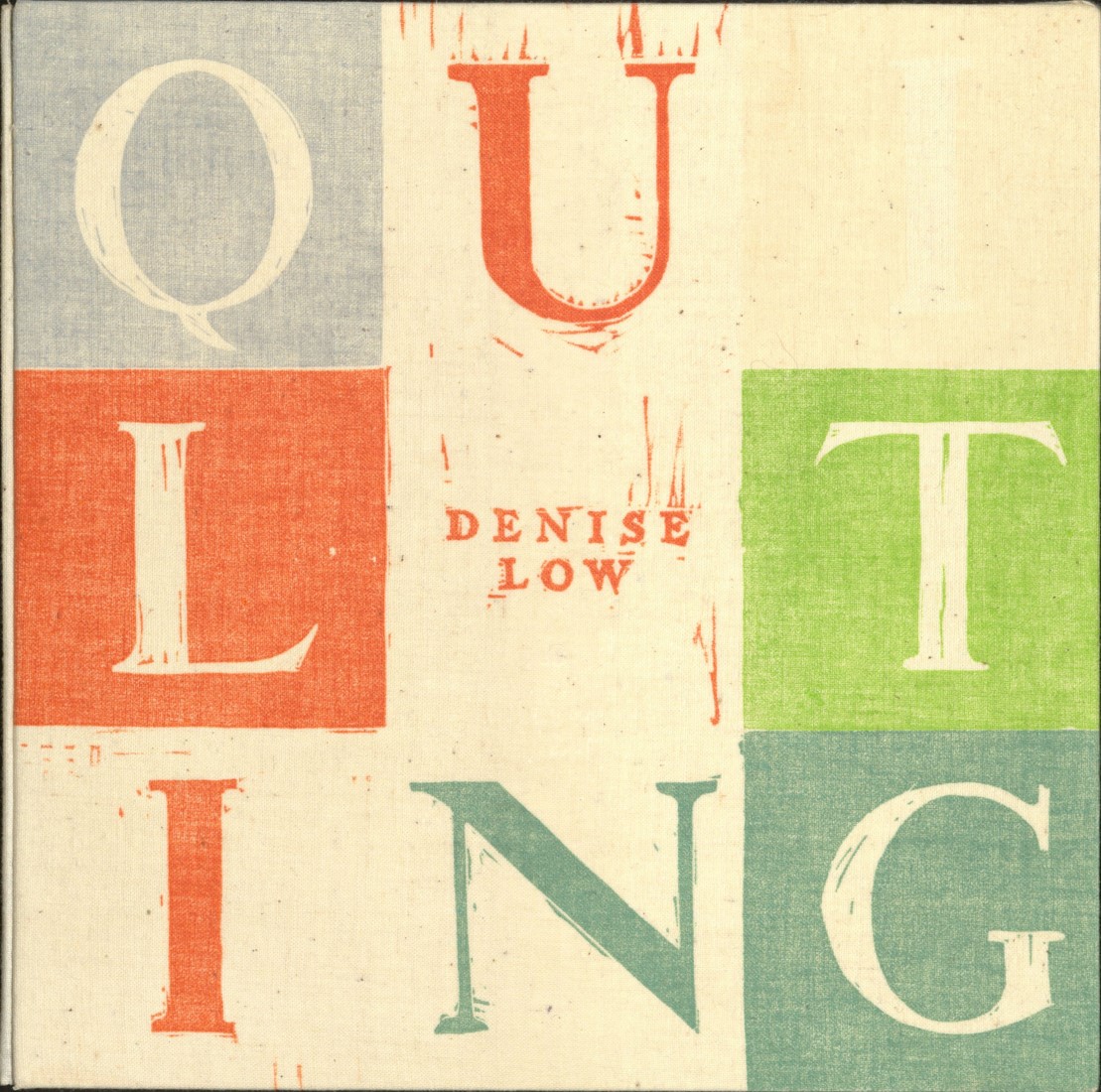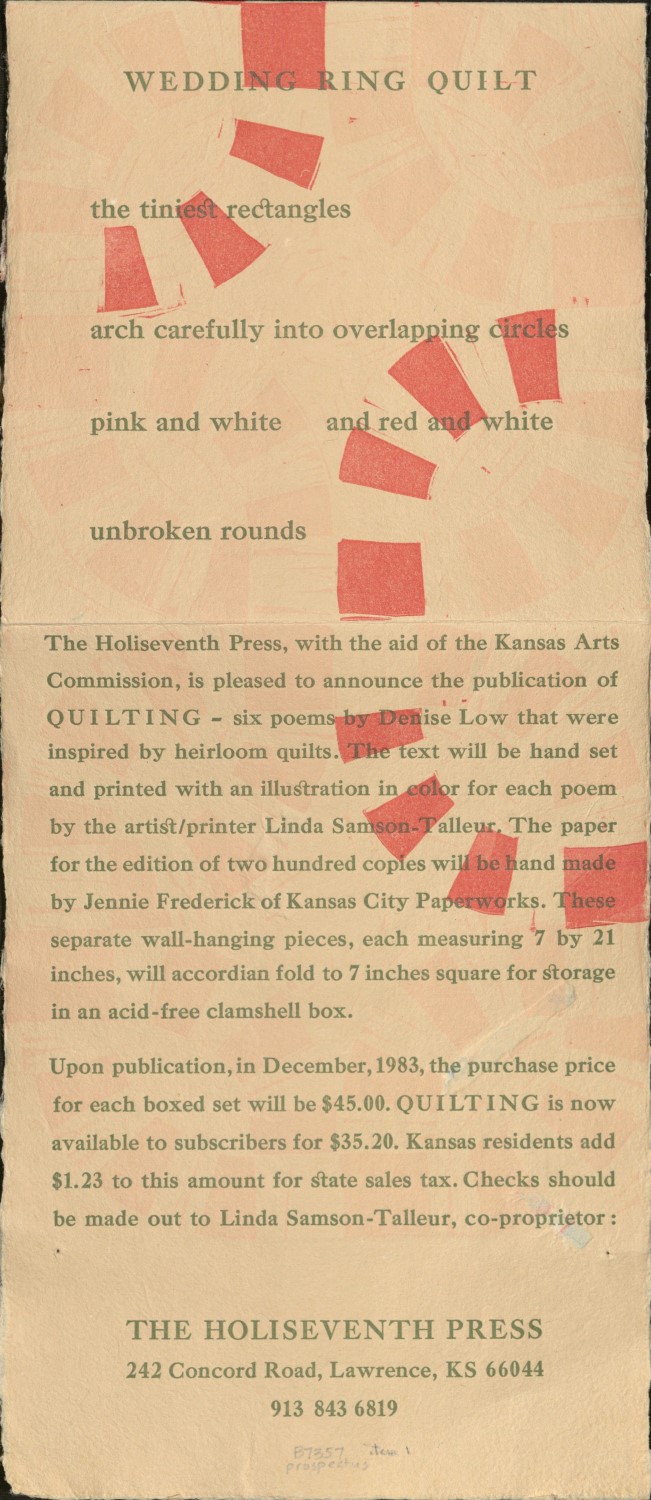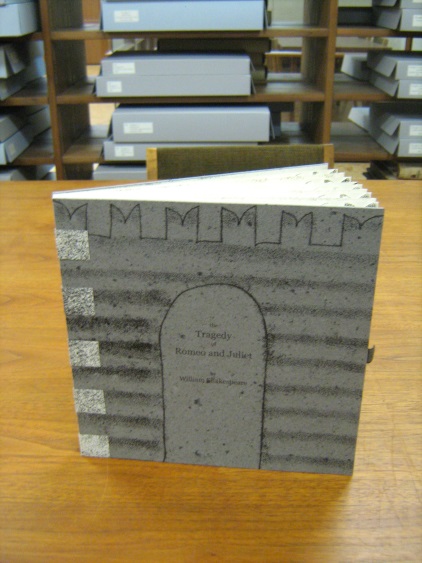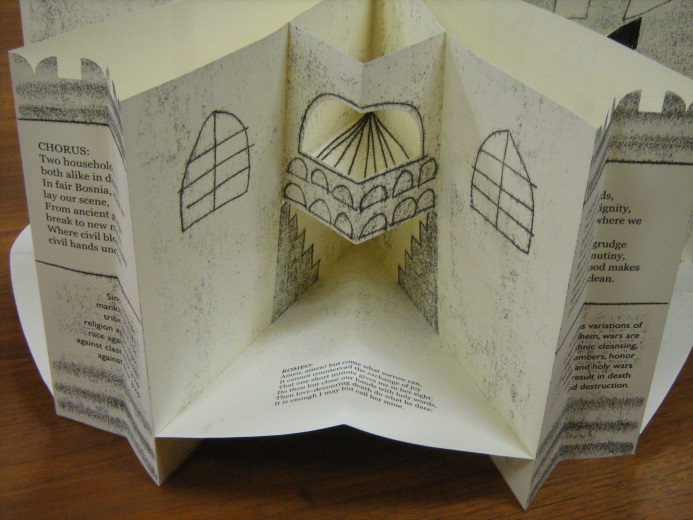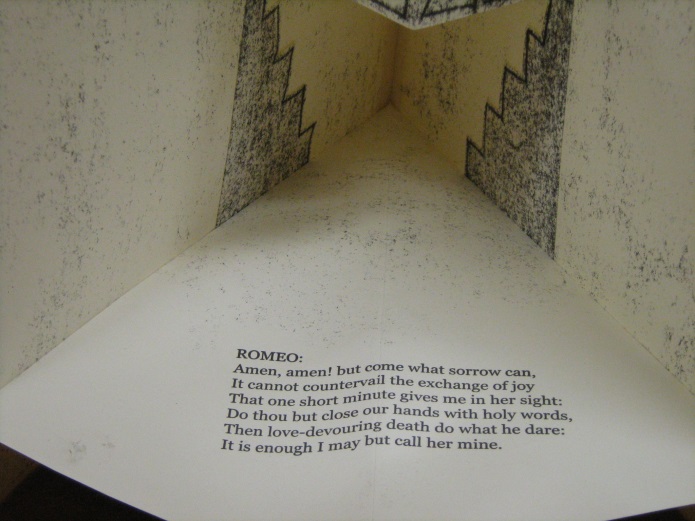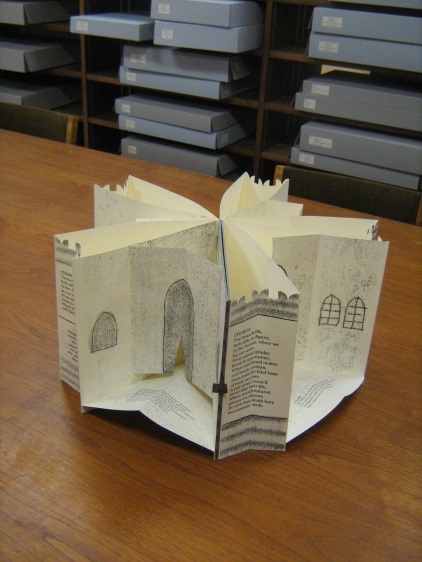That’s Distinctive!: Artist’s Book
March 8th, 2024Check the blog each Friday for a new “That’s Distinctive!” post. I created the series because I genuinely believe there is something in our collections for everyone, whether you’re writing a paper or just want to have a look. “That’s Distinctive!” will provide a more lighthearted glimpse into the diverse and unique materials at Spencer – including items that many people may not realize the library holds. If you have suggested topics for a future item feature or questions about the collections, feel free to leave a comment at the bottom of this page.
This week on That’s Distinctive! I am sharing Not Paper by Peter and Donna Thomas. The book describes and contains paper-like materials that do not actually qualify as paper. It is “an adaptation of [the authors’] 1997 miniature book Almost Paper.” Spencer has copy #26 out of the 48 copies that were made.
A fun tidbit about Not Paper is that it is actually an artist’s book. According to Smithsonian Libraries, “an artist’s book is a medium of artistic expression that uses the structure or function of ‘book’ as inspiration—a work of art in book form.” The Oxford Companion to the Book describes artists’ books as “both object and concept.” The 1960s brought a surge of artists’ books throughout Europe and much of the US. For many, this is the time artists’ books became classified as a distinct genre. There is no true definition of what makes an artist’s book though. Both the definition and history of how they came to be are heavily debated.
I had loosely heard about artists’ books in passing but had never really encountered one even during my time at Spencer Research Library (though we regularly have classes that visit to examine them). One day when putting out a call for blog ideas, the topic of artists’ books came up via one of the catalogers here at Spencer, and I thought I would do some searching. That is how I stumbled upon this particular book. I found it interesting because of how it is stored and thought it was intriguing that it is bound in an accordion style. In flipping through the book and learning about all these materials that are not technically paper, it made me think back to fifth grade when we made “paper” one day in science class. It was a neat experience that has stuck with me since. My experience with finding this book has definitely made me want to dig deeper and see the different artists’ books we have in Special Collections.
You can find Spencer artists’ books by searching the KU Libraries online catalog in a couple of different ways. One option is to set the drop-down field menu to “subject” and use the search term “Artists’ books–Specimens.” Or, to get an even larger number of results, set the drop-down field menu to “any field” and use the search term “artists’ books” (in quotation marks) with the search term “specimens.”
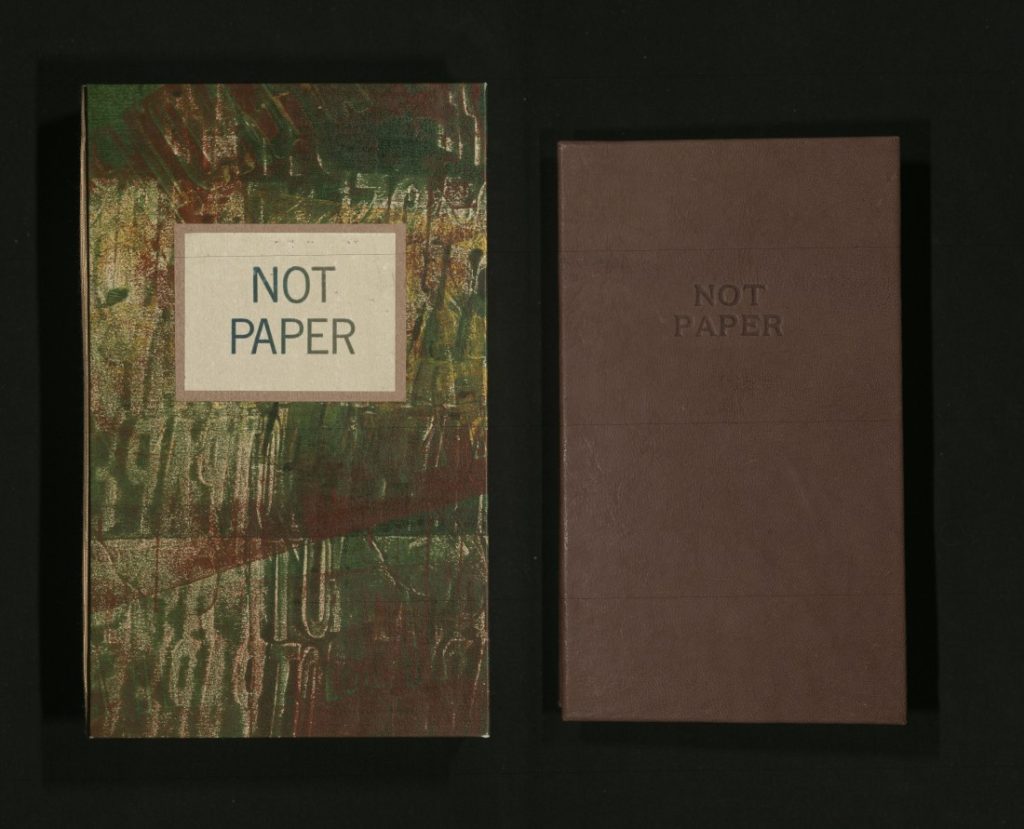

Tiffany McIntosh
Public Services

